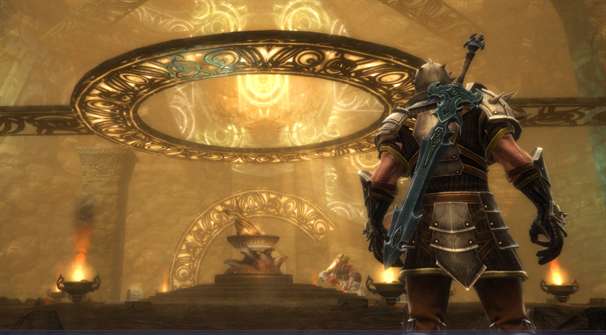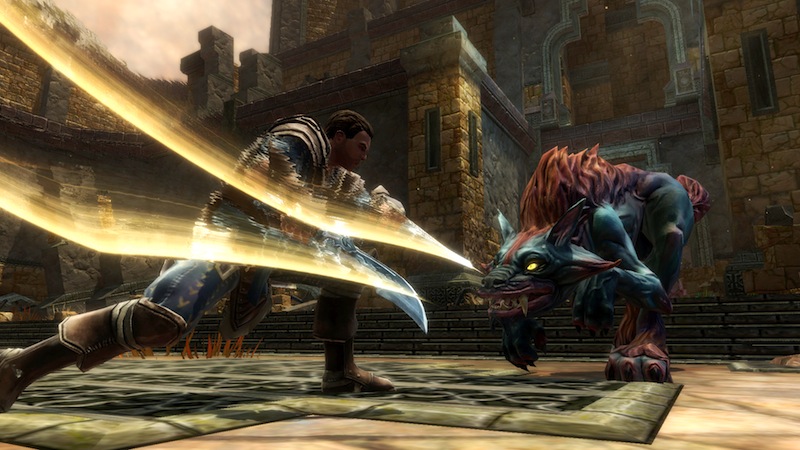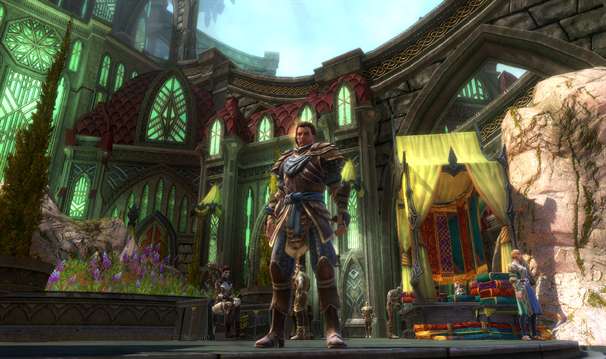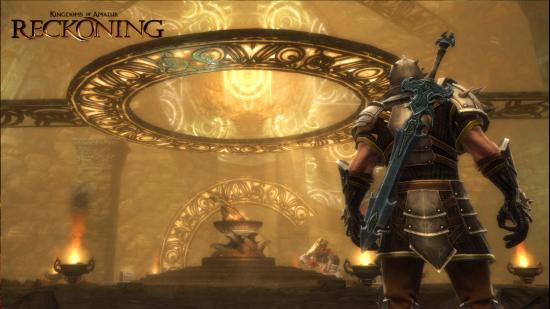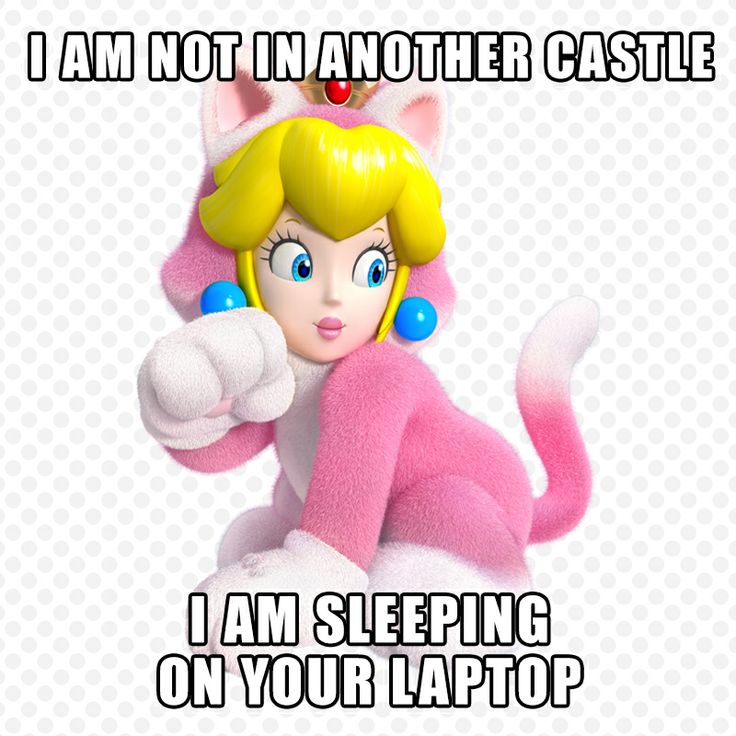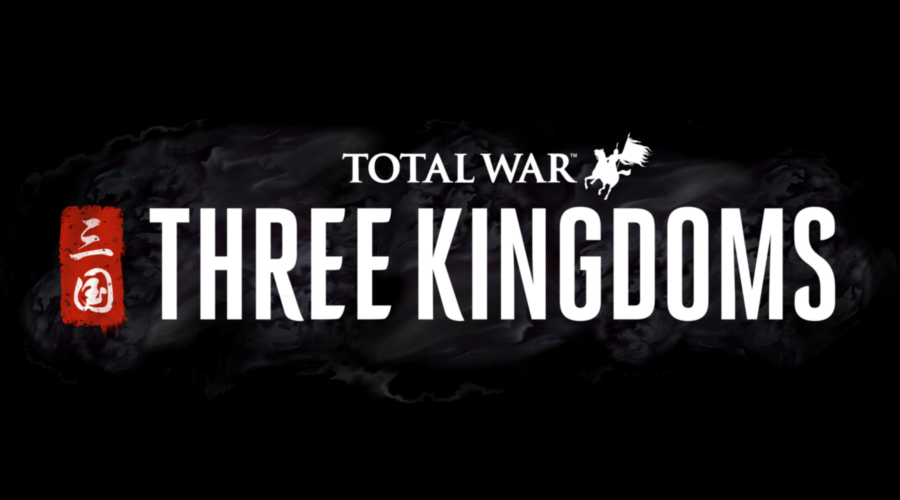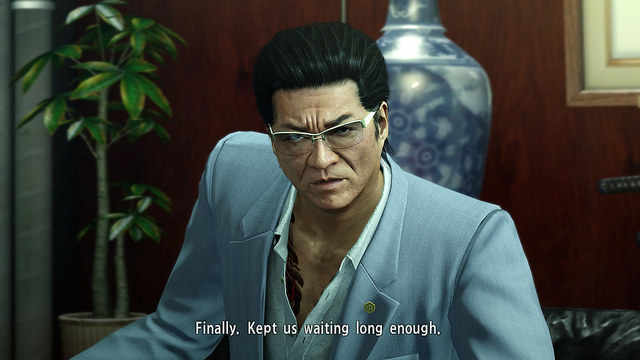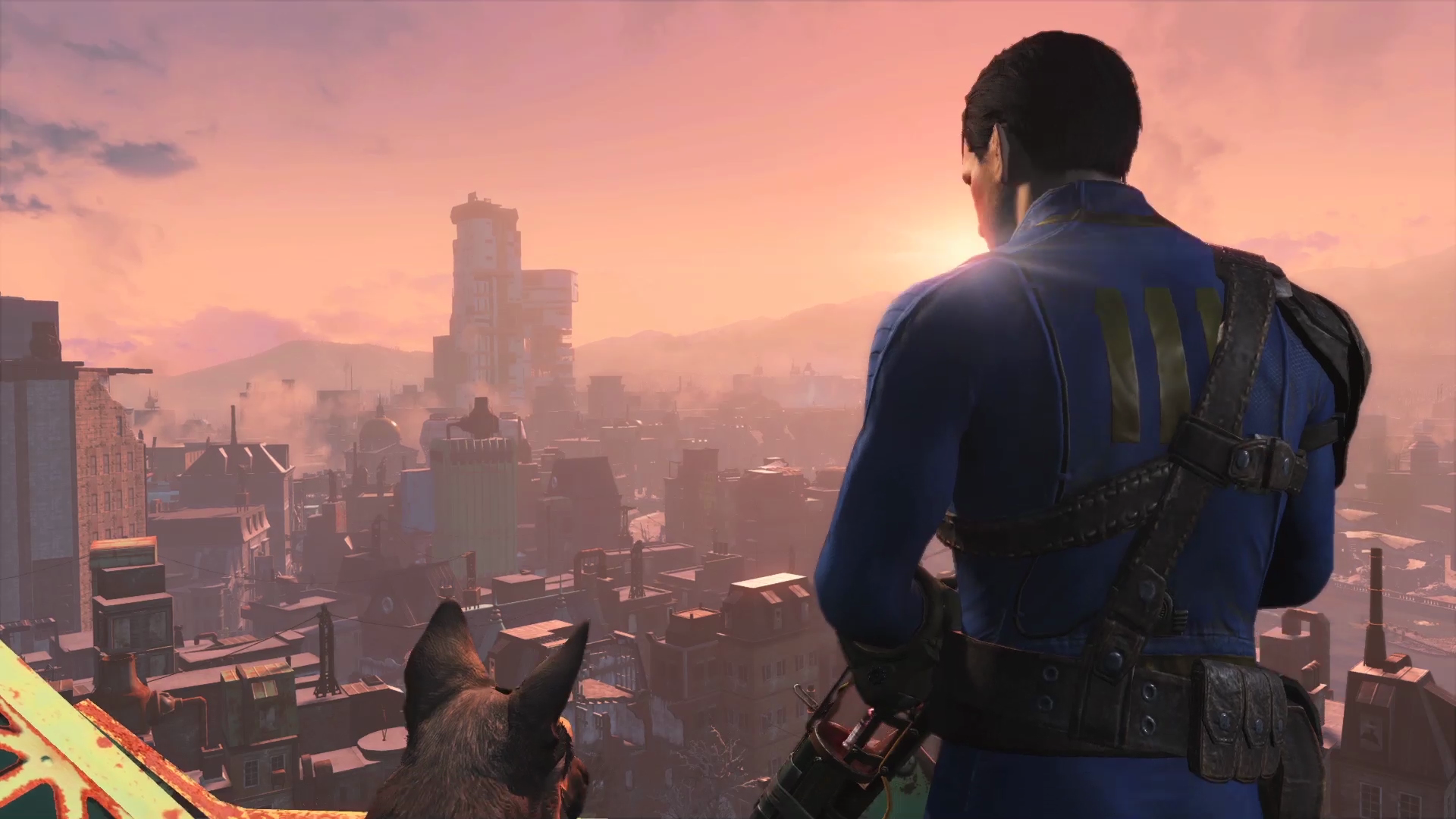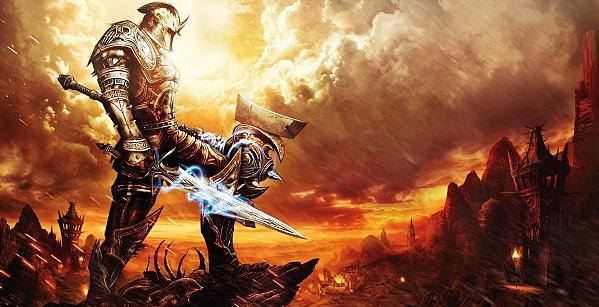
‘Be anyone, do anything’ – this is the tenet of the western role-playing game, a principle so firmly entrenched in the minds of gamers that the notion of ‘freedom’ itself has become a virtue irrespective of design. Truly, this is the age of the western role playing game, typified by the colossal Skyrim: a game so vast and open that for many its numerous pleasures are overwhelming, like being at a buffet and not knowing what to try next. If Bethesda’s game is the goliath, then Kingdoms of Amalur: Reckoning is perhaps David, the scrappy warrior hacking at the heels of the giant. Developed by 38 Studios and Big Huge Games and published under the EA Partners label, Reckoning is a third-person RPG with an emphasis on fluid, responsive combat and the acquisition of loot and abilities. Despite its underdog status, however, Reckoning is not wanting for pedigree, its lore having been penned by best-selling writer R.A. Salvatore and its design led by RPG-veteran Ken Rolston, whose resume includes design duties on Elder Scrolls entries, Morrowind and Oblivion. It comes as a small relief, then, that Reckoning mostly manages to bear the burden of its credentials and the inevitable comparisons to its most obvious competitor – though not without serious caveats when it comes to story, characterisation, and the intangible elements which elevate a game from good to great.
Reckoning begins with the player constructing an avatar from a modest character-creation tool, their creation being unveiled by being unceremoniously dumped onto a pile of rotting corpses in a dank dungeon laboratory. When the player’s character mysteriously awakens from death, they find themselves suffering from amnesia, the most ubiquitous of gaming afflictions, and are ominously informed that they are the ‘Fateless One’: a denizen of Amalur liberated from their ordained destiny. Given that all the races of Amalur, from ordinary humans to the immortal elf-like Fae, are resigned to their designated destinies, the Fateless One is quickly regarded with awe and suspicion and sets out to reclaim their past and save the land from imminent destruction. Reckoning is dense with lore and detail courtesy of its celebrated author, but the game does a remarkably sloppy job in establishing Amalur as a place or defining the player’s role within it. While the concept of the ‘Fateless One’ is a clever conceit to justify the conventions of a western RPG, its vague, broad-brush approach serves as an example of the blandness of the rest of the game’s narrative, which never really engages as a mystery (‘Who is this mysterious amnesiac?’ Who cares?) nor establishes any sense of urgency in spite of all the faux-gravitas on show. While Amalur and its denizens are fleshed out to an alarming degree, courtesy of hundreds of lines of optional dialogue, Reckoning never manages to make the world a place worth saving. Compared to entries in a series like The Legend of Zelda, which etches its small, sparsely populated worlds into player’s memories through splashes of backstory and incidental detail, Reckoning feels anaemic; characters are mere ciphers in service of a plot, with none of the humanity or shading of the Mass Effect 2 cast, nor the wit and oddball irreverence of the residents of Fable‘s Albion. The fundamental failure of Reckoning to engage player’s emotions or provide a compelling context for its action is significant, particularly in a genre which typically exalts story.
If Reckoning fails to resonate on a narrative level, then it is fortunate indeed that its fundamental systems are utterly rock-solid. At the core of all the game’s systems is its combat, which is the facet through which the player’s character and choices are defined. While the game offers players the choice to adopt familiar personas with predictable attributes (sorcerers with an emphasis on magic, rogues who favour stealth and archery, or warriors whose skills with hammers and longswords take precedence), the process of ‘levelling up’ and sinking points into skill trees is made immeasurably rewarding on account of the game’s desire to accommodate any play-style. Whereas other western RPGs can often punish players for being jacks of all trades but masters of none, Reckoning is content to let players be selective in their approach. For example, a player may wish to focus on brute force by investing points in the ‘Might’ skill-tree, but place a secondary emphasis on magical techniques by sinking points into ‘Sorcery’. Placing enough points into the trees then allows for players to assign their characters a ‘Fate’, which resembles a tarot card, granting further bonuses to reward any given play-style. Continuing on with the aforementioned example, prioritising ‘Sorcery’ and ‘Might’ eventually unlocks the hybrid Fate of ‘Battlemage’, a hybrid class which augments melee prowess with magical mastery. Reckoning‘s willingness to accommodate player choice, to allow for both specialisation and balance, is typified by its refusal to force players to commit – at any time, and for a modest sum of gold, the player can visit a ‘Fateweaver’ and ‘re-spec’ all of their accumulated points without penalty; the game’s encouragement of this ability to reinvent characters on the fly is welcoming and particularly well-justified given the aforementioned narrative conceit which casts players as the ‘Fateless One’.
Of course, intelligent design can be undone by lacklustre execution, but the core combat in Reckoning is rewarding and accessible enough to make it all worthwhile. While the game wears its numbers on its sleeve, minute-to-minute combat is as responsive and reflex-based as anything from God of War. While other RPGs like Fable have attempted to graft snappy, real-time combat onto their underlying systems, Reckoning is the first to feature depth and sophistication enough that it could, with minor tweaking, support a more linear action title on its own. Switching from magic to timing-based melee weapon combinations or rolling away from an incoming blow is quick, intuitive and fair, and compared to the dull and awkward fumbling which constitutes combat in Skyrim, the combat in Reckoning always looks weighty and impressive. Over the long haul, however, many may find the appeal of the game’s combat to wane, particularly given that after a certain level the enemy encounters and tactics needed to succeed seldom, if ever, change (save for when a character is completely reinvented by way of a ‘re-spec’). With many dozens of side-quests and more substantial faction story-lines to complement the main narrative, Reckoning spreads itself fairly thin over the course of fifty or sixty hours, and in the absence of compelling characters or an engaging plot, many players will be reliant on their obsessive-compulsive tendencies to hoard and craft loot to sustain them over the long haul. While it feels disingenuous to chastise developers for offering up a generous abundance of content, Reckoning would no doubt feel less repetitive if its writing and scenarios were of the same standard as its action.
Technically-speaking, Reckoning is refreshingly stable and performs well. Loading screens may be frequent, but are usually very swift, and bugs are infrequent and usually minor, save for a couple of instances where the camera becomes stuck on geometry. The game’s frame rate on PS3 is, for all those concerned given Bethesda’s noted difficulties with the console, very stable and smooth, and draw-distances are impressive save for occasional pop-up. On the artistic side, however, Reckoning often stumbles. Its art design is vivid, colourful, but ultimately insipid, with diverse regions of Amalur rendered as rote, themed environments such as deserts and swamps, none of which join together in any meaningful way or successfully straddle the line between realism and comic stylisation. The game’s candy-coloured art and segregated map design ensure that Amalur never quite convinces as a setting, lacking the verisimilitude on offer in Skyrim or the fairy tale cohesiveness of Fable‘s universe. While the game is pleasant enough to look at (and listen to, courtesy of solid voice acting and a gentle, ambient score), it is seldom very inspiring. A similar lack of vision extends to the user interface, which is easy to use but by turns bland and ugly. For what was no doubt an expensive game over which many talented people laboured for years, Reckoning‘s spotty presentation is slightly disappointing.
A person’s enjoyment of Kingdoms of Amalur: Reckoning is certainly dependent on their individual tolerances. Many will fail to connect with the world of Amalur and find the game’s solid combat insufficient to carry them over its hefty duration; others will be immediately drawn in by the promise of the next great loot-drop and will not be able to stop playing until every quest is cleared and every troll vanquished. For most, Reckoning is likely to prove to be a mixed experience. Its considerable virtues, namely an accessible, engaging combat system and a desire to be experienced in whatever way the player chooses, are partially offset by its creative blankness. ‘Be anyone, do anything’: should these words hold allure for you, Reckoning is sure to prove a worthwhile venture – just don’t expect its world to linger in your nightly dreams.
Satisfying Combat | Lengthy and Substantial | Intelligent, Accessible RPG Mechanics
Bland Narrative Fails to Engage | Derivative Art-Style Lacks Personality | Some Repetitive Quests

